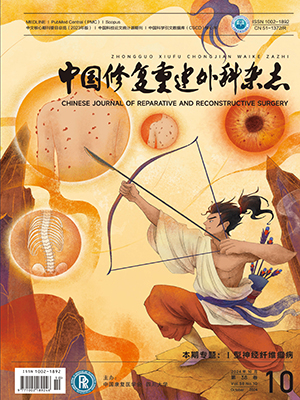Objective To observe the long-term clinical results of repairing large articular cartilage defects of the hip and the knee with free autogeneous periosteum. Methods Based on the results of experimental studies, the authors used free autogeneous periosteum transplantation and postoperative continuous passive motion (CPM) to repair large articular cartilaginous defects in 52 patientsfrom February 1987 to August 1995. Of 37 patients with complete follow-up data, 16 had congenital dislocation of the hip, 6traumatic arthritis of hip, 1 femoral head destruction following mild infection, 2 ankylosing spondylitis, 6 intra-articular fracture of the knee, 4 arthritisof the knee and 2 stiff knee following joint infection. The patients with dislocation of hip were given relieving traction before operation. The cartilages of pathological changes were excised to bleeding bone. The defects were repairedwith periosteum removing from tibia. CPM were immediately applied for 4-6 weeksand no bearing was allowed 6 months after discharge. The silicon membrane was taken out in the 6th month. Results Thirty-seven patients (17 males, 20 females) were followed up 7-15 years with an average of 10.5 years. The functional evaluation referred to joint pain degree,joint mobile range,daily activity and X-ray findings. The results were excellence in 11 patients , good in 18 patients , poor in 8 patients. Conclusion The method to repair articular cartilage defect with free autogeneous -periosteum is effective and may be applied clinically.
Citation: YANG Guiyong,LU Shibi,WANG Jifang,et al.. LONG-TERM CLINICAL OBSERVATION ON THE REPAIR OF LARGE ARTICULAR CARTILAGE DEFECTS OF THE HIP AND THE KNEE WITH FREE AUTOGENEOUS PERIOSTEUM. Chinese Journal of Reparative and Reconstructive Surgery, 2004, 18(1): 8-11. doi: Copy




